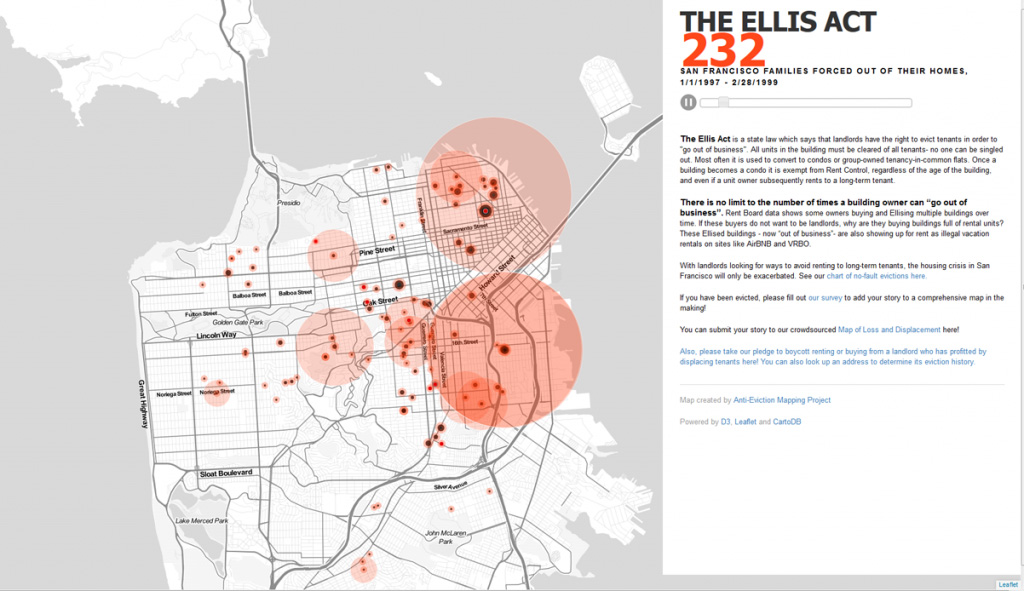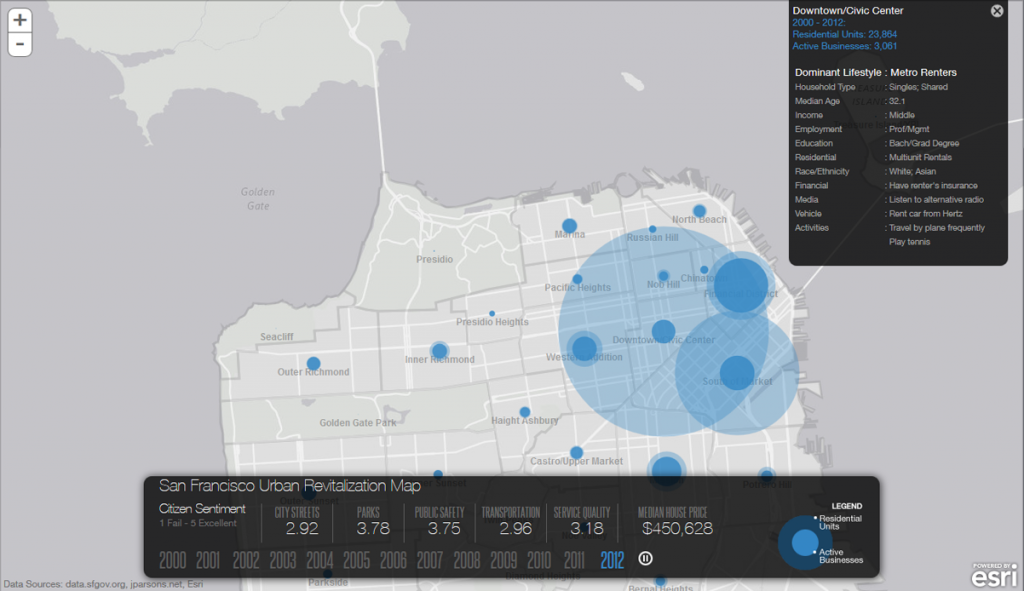The Anti-Eviction Mapping Project in San Francisco visualizes the locations of evictions caused by the use of the Ellis Act state law. The Ellis Act is a state law which says that landlords have the right to evict tenants in order to “go out of business”. All units in the building must be cleared of all tenants- no one can be singled out. Most often it is used to convert to condos or group-owned tenancy-in-common flats. Once a building becomes a condo it is exempt from Rent Control, regardless of the age of the building, and even if a unit owner subsequently rents to a long-term tenant.
Obviously, there is no limit to the number of times a building owner can “go out of business” (!) Because of the presence of Ellis Act law and as well as the landlords looking for ways to avoid renting to long-term tenants, the housing crisis in San Francisco will only be exacerbated.
This online map is a fascinating tool where we experience activist work and visualized information of evictions at the same time. The Anti-Eviction Mapping Project (AEMP) is a huge project which includes data from active surveys on eviction to the profiles of evicted tenants.


